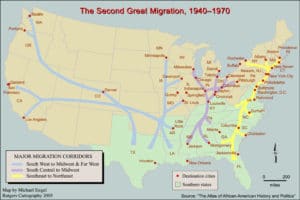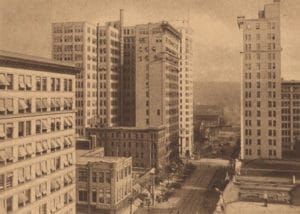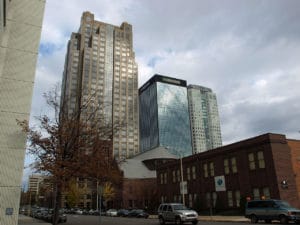Continued racial discrimination and lynching, agricultural depression, and the failure of the cotton crops due to boll weevil infestation led tens of thousands of African Americans from rural Alabama and other states to seek opportunities in northern and Midwestern cities during the early decades of the 20th century as part of the Great Migration out of the South.

At the same time, many rural people migrated to the city of Birmingham to work in new industrial jobs. Birmingham experienced such rapid growth that it was called the “Magic City”. Heavy industry and mining were the basis of its economy.

Industrial development related to the demands of World War II brought a level of prosperity to the state not seen since before the civil war. Rural workers poured into the largest cities in the state for better jobs and a higher standard of living. This economic trend continues into the 21st century.
Geography:
Alabama is the thirtieth-largest state in the United States with 52,419 square miles of total area. About three-fifths of the land area is a gentle plain with a general descent towards the Mississippi River and the Gulf of Mexico. The North Alabama region is mostly mountainous, with the Tennessee River cutting a large valley and creating numerous creeks, streams, rivers, mountains, and lakes.
The state ranges in elevation from sea level at Mobile Bay to over 1,800 feet in the Appalachian Mountains in the northeast.
The highest point is Mount Cheaha, at a height of 2,413 ft.

Economy:
The state has invested in aerospace, education, health care, banking, and various heavy industries, including automobile manufacturing, mineral extraction, steel production and fabrication. By 2006, crop and animal production in Alabama was valued at $1.5 billion. In contrast to the primarily agricultural economy of the previous century, this was only about 1% of the state’s gross domestic product. The number of private farms has declined at a steady rate since the 1960s, as land has been sold to developers, timber companies, and large farming conglomerates.

The five employers that employed the most employees in Alabama in April 2011 were: Redstone Arsenal, University of Alabama at Birmingham (includes UAB Hospital), Maxwell Air Force Base, State of Alabama, and Mobile County Public School System.
Agriculture:
Alabama’s agricultural outputs include poultry and eggs, cattle, fish, plant nursery items, peanuts, cotton, grains such as corn and sorghum, vegetables, milk, soybeans, and peaches. Although known as “The Cotton State”, Alabama ranks between eighth and tenth in national cotton production, according to various reports.
Industry:
Alabama’s industrial outputs include iron and steel products (including cast-iron and steel pipe); paper, lumber, and wood products; mining (mostly coal); plastic products; cars and trucks; and apparel. In addition, Alabama produces aerospace and electronic products, mostly in the Huntsville area, the location of NASA’s George C. Marshall Space Flight Center and the U.S. Army Materiel Command, headquartered at Redstone Arsenal.
